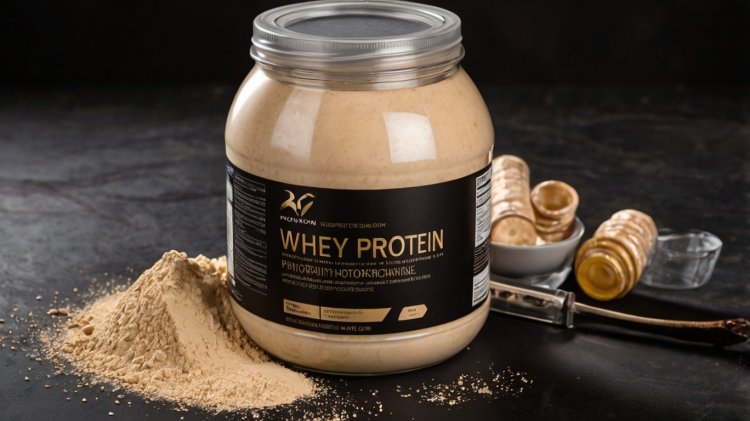Whey Protein Concentrate: Benefits, Uses, and Production
Learn all about whey protein concentrate (WPC), its production process, benefits, and applications in health, fitness, and food industries. Discover why WPC is a versatile, high-quality protein supplement.

The Comprehensive Guide to Whey Protein Concentrate: Benefits, Uses, and Production
Whey protein concentrate (WPC) is one of the most versatile and widely used forms of whey protein. Known for its high protein content and functional properties, WPC has applications that extend beyond fitness supplements, appearing in numerous food products. This guide dives deep into what WPC is, how it’s made, and why it’s a sought-after ingredient.
What is Whey Protein Concentrate (WPC)?
Whey protein concentrate is derived from the liquid whey portion of cow’s milk, which separates during the cheese-making process. It undergoes a series of processing steps to remove water, lactose, and minerals, leaving behind a concentrated source of protein.
Composition of Cow's Milk:
- Water: 88%
- Carbohydrates: 5%
- Fat: 4%
- Protein: 3% (80% casein, 20% whey)
WPC contains 25-80% protein by weight, with the remaining portion consisting of fat, lactose, and moisture. Its unique nutritional profile makes it ideal for supporting muscle growth, recovery, and overall health.
How is Whey Protein Concentrate Made?
The production of WPC involves advanced filtration techniques to separate and concentrate proteins.
-
Separation Process:
- Whey is separated from casein during the cheese-making process using rennet, heat, or acids.
- Liquid whey is collected and pasteurized to remove bacteria.
-
Filtration Techniques:
- Ultrafiltration (UF): Whey is passed through membranes to remove water, lactose, and minerals while retaining proteins and fat.
- Diafiltration (DF): Water is added during filtration to further remove impurities and increase protein concentration.
-
Drying Process:
- The protein-rich retentate is concentrated through evaporation and spray-drying, resulting in whey protein concentrate powder.
WPC’s protein content can vary depending on the filtration level, ranging from WPC-35 (35% protein) to WPC-80 (80% protein).
Taste and Texture of Whey Protein Concentrate
WPC offers a creamy, milkshake-like consistency, thanks to its fat and carbohydrate content. This rich texture and flavor make it an appealing choice for shakes, smoothies, and food formulations, especially in flavors like chocolate, vanilla, and strawberry.
Benefits of Whey Protein Concentrate
-
High-Quality Protein Source:
WPC is a complete protein containing all nine essential amino acids, including naturally occurring branched-chain amino acids (BCAAs) that support muscle recovery and growth. -
Supports Muscle Recovery:
Ideal for athletes and fitness enthusiasts, WPC helps repair muscle tissue after workouts and promotes protein synthesis. -
Versatility in Food Applications:
WPC enhances the nutritional value and functionality of food products, including baked goods, beverages, and dairy items. -
Cost-Effective Protein Supplement:
Compared to whey protein isolate, WPC is a more economical option, making it accessible for a wide range of consumers. -
Improved Flavor and Texture:
The natural fat and carbohydrate content of WPC contribute to a richer taste and creamier consistency, ideal for indulgent protein shakes.
Applications of Whey Protein Concentrate
WPC is a multifunctional ingredient used in various industries:
- Health and Fitness: Found in protein shakes, powders, and bars to support muscle building and recovery.
- Food Industry: Used in breakfast cereals, infant formulas, baked goods, and processed meats for added nutrition and functionality.
- Dairy Products: Improves the texture and taste of yogurt, cheese, and ice cream.
Common Misconceptions About Whey Protein Concentrate
-
“WPC is inferior to isolate.”
While WPC has slightly more carbs and fats, it provides the same high-quality protein and additional nutritional benefits. -
“WPC is too high in calories.”
For most individuals, the modest calorie difference is negligible, especially when balanced with an active lifestyle.
Key Considerations When Using WPC
- Dietary Goals: If you’re on a calorie-restricted diet, monitor your intake of WPC due to its slightly higher fat and carbohydrate content.
- Lactose Intolerance: WPC contains more lactose than isolate, which may cause digestive discomfort in sensitive individuals.
Conclusion
Whey protein concentrate is a versatile, high-quality protein supplement suitable for a variety of dietary and fitness goals. With its rich flavor, functional properties, and affordability, WPC is an excellent choice for anyone looking to enhance their protein intake. Whether you’re an athlete seeking muscle recovery or a foodie exploring its culinary applications, WPC offers a range of benefits to meet your needs.
FAQs
1. What is whey protein concentrate?
WPC is a protein supplement made by filtering whey, with protein content ranging from 25% to 80%.
2. How is whey protein concentrate different from isolate?
WPC contains more fats and carbohydrates, offering a creamier texture, while isolate has a higher protein concentration and fewer calories.
3. Can whey protein concentrate help build muscle?
Yes, WPC is rich in BCAAs, which support muscle recovery and protein synthesis.
4. Is WPC suitable for people with lactose intolerance?
WPC contains more lactose than isolate and may not be ideal for those with lactose sensitivity.
5. What foods contain whey protein concentrate?
WPC is found in protein supplements, infant formulas, baked goods, cereals, and dairy products like yogurt and cheese.
Would you like further adjustments or additional details?










